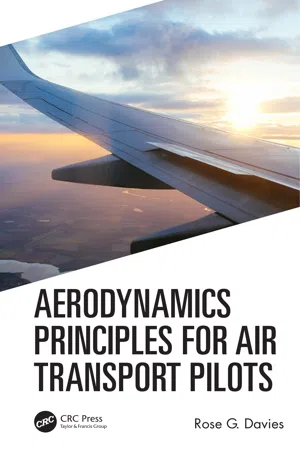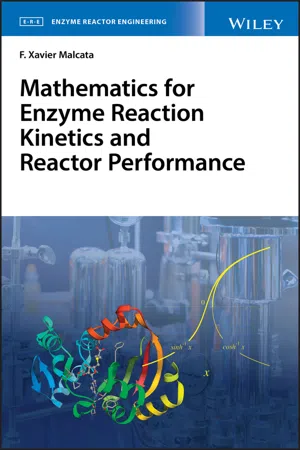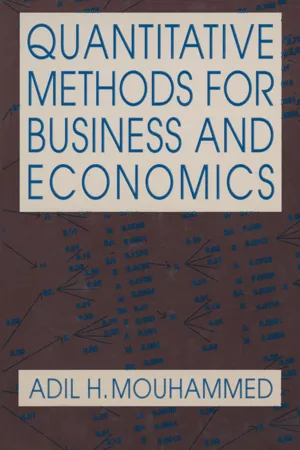Technology & Engineering
Total Derivative
The total derivative represents the overall change in a function with respect to all of its variables. It captures the combined effect of changes in multiple variables on the function's output. In engineering and technology, the total derivative is crucial for understanding how a system's output responds to variations in its input parameters.
Written by Perlego with AI-assistance
Related key terms
Related key terms
1 of 4
Related key terms
1 of 3
3 Key excerpts on "Total Derivative"
- eBook - ePub
- Rose G Davies(Author)
- 2020(Publication Date)
- CRC Press(Publisher)
The result of the dot productv ·∇is:v⋅∇=vx∂∂x+vy∂∂y+vz∂∂z(1.9)For example:vx∂T∂x+vy∂T∂y+vz∂T∂zcan be rewritten asv⋅∇Tandv⋅∇vx=vx∂vx∂x+vy∂vx∂y+vz∂vx∂z.Total DerivativeA partial derivative can describe the changes of a multi-variable function with respect to a specific variable, as discussed above. However, the total change, or complete change of the function with respect to a specific variable, can be analysed by a total/complete differentiation of the function. This total/complete differentiation will consider the changes of the function related to all variables, and consider all of the variables are sub-functions of the specific variable.x,yandtare the variables of functionf(x,y,t). To carry out the total differentiation of this function with respect tot, we consider thatxandyare functions oft, applying theChain Rule:dfdt=∂f∂t+∂f∂xdxdt+∂f∂ydydt(1.10)Using the same method, the Total Derivative with respect tox(treatyandtas functions ofx) is:dfdx=∂f∂tdtdx+∂f∂x+∂f∂ydydx,(1.11)and the Total Derivative with respect toy(treatxandtas functions ofy) is:dfdy=∂f∂tdtdy+∂f∂xdxdy+∂f∂y.(1.12)From equations (1.10), (1.11), and (1.12), we can obtain the total change of the function. It can be expressed as:df=∂f∂tdt+∂f∂xdx+∂f∂ydy(1.13)For example, for the function used inExample 1.3:f(x,y,t) = 2x2y+ sin(πt), the total change of this function is:df=πcos(πt)dt+4xydx+2x2dy.In fluid mechanics and aerodynamics, a property, for example, temperature, or velocity/speed of fluid particles, is a function of the location of fluid particles, i.e. inx,y, andzcoordinate space, andx,y, andzare functions of timet.Therefore, the Total Derivative of a propertyfwith respect to timetis:dfdt=∂f∂t+∂f∂xdxdt+∂f∂ydydt+∂f∂zdzdt(1.14)anddxdt,dydt, anddzdtare the change rates of displacement inx,y, andzdirections, i.e. the velocity components inx,y, andzdirections, respectively - F. Xavier Malcata(Author)
- 2020(Publication Date)
- Wiley(Publisher)
8 Limits, Derivatives, Integrals, and Differential EquationsMost functions of practical interest – in that they can be used to simulate physicochemical phenomena, are intrinsically continuous; this means that they evolve smoothly along their independent variable, i.e. the value taken by the function at a given value of its independent variable coincides with what would be expected from the trends in the vicinity of said value for the latter variable. This calls for the concept of limit – based on realization that an infinite sequence of values taken by a function may be such that every element will never go beyond a finite threshold; said topic is particularly relevant when seeking asymptotic behaviors of functions – since they tend to take forms simpler than the original functions themselves; or when quantifying the tendency of evolution in the neighborhood of some point via the concept of derivative (or ratio of small variations of the function to its independent variable). Derivatives find their widest applicability when searching for optima – one of the most seminal goals of process engineers. In fact, local maxima of a given function are described by nil values of the corresponding derivative if not subjected to otherwise (externally) imposed physical constraint(s); decision on the type of optima would then come at the expense of higher order derivatives – thus extending the concept of differentiation of a function itself to differentiation of a previous derivative.Once a function (seen as an algebraic operator) is proposed, one may in principle define its inverse; this supports the common strategy to solve an algebraic equation. A similar rationale may be applied to the derivative – in which case the concept of integral arises. The most important use of integrals occurs in attempts to calculate the area of a surface bounded by a given curve, or else the volume of a revolution solid; both possess physical relevance, and adhere to evidence in quite a number of practical situations of interest. On the other hand, balances of various kinds often resort to local variations of functions (represented by their derivatives) further to the values of the functions themselves – thus giving rise to differential equations; while solution of algebraic equations calls for specific solving formulae at the expense of the inverse functions therein (or else numerical methods, when no analytical solution can be found), differential equations resort to integrals as inverse derivatives, which must be combined with the inverse functions themselves – normally as part of much more involved approaches.- eBook - ePub
- Adil H. Mouhammed(Author)
- 2015(Publication Date)
- Routledge(Publisher)
For a function such as, Z = f(X,Y), the total differential dZ of the function measures the small change in Z, (dZ), caused by the changes in both X, (dX), and Y, (dY). In other words, the total differential is used if both X and Y change simultaneously-no independent variable is constant. Therefore, the total differential (dZ) of the function Z = f(x,y) isdZ = fx dx + fy dy,where fx (or Zx and fy (or Zy ) are the partial derivatives of the function with respect to x and y, respectively. Generally, for a function of n variables such asZ = f(x1 , x2 , x3 ..., xn )the total differential would bedZ = fx1 dx1 + fx2 dx2 + fx3 dx3 +...+ fxn dxn .Example 1: Differentiate the function Z = 5XY totally. Solution:Zx = 5y and Zy = 5x;thus, the total differential is dZ = 5ydx + 5xdy.Example 2: Differentiate the function Z = 8x2 y2 totally. Solution:Zx = 16xy2 and Zy = 16x2 y,and the total differential isdZ = (16xy2 )dx + (16x2y )dy.Example 3: The Utility function U = 2x04 y0.6 , where x and y are two commodities, shows that a consumer obtains certain utils from the consumption of x and y. Solution: Differentiate the utility function totally to obtainUx = 0.8x−0.6 y0.6 and Uy = 1.2x0.4 y−0.4orUx = 0.8(y/x)0.6 and Uy = 1.2 (x/y)0.4 .thus,du = 0.8(y/x)0.6 dx + 1.2 (x/y)0.4 dy.If x = 5 units of commodity x and y = 10 units of commodity y, then the increase (du) in the utility for dx = dy = 1 would bedu = 0.8(10/5)0.6 (1) + 1.2(5/10)0.4 (1) = 2.12 utils.Example 4: Suppose the corn market is modeled as follows:Qd = 4 − (1/2)P + 2y + Pb (20) Qs = −2 + (2/3)P (21) Qd = Qs = Q. (22) The question is to express the above model implicitly and to differentiate the implicit form of the model totally in order to find ∂Q/∂y and ∂P/∂y, assuming Pb is a constant, where y and Pb are income and price of beef, respectively (Chiang 1984). Solution: Using equation (22) in equations (20) and (21)
Index pages curate the most relevant extracts from our library of academic textbooks. They’ve been created using an in-house natural language model (NLM), each adding context and meaning to key research topics.
Explore more topic indexes
Explore more topic indexes
1 of 6
Explore more topic indexes
1 of 4


